Introduction
In an era where digital transformation is paramount, cloud advisory services emerge as pivotal for organizations aiming to optimize their cloud infrastructure, streamline operations, and bolster their security posture. These services provide expert insights that allow businesses to tailor their cloud strategies to align seamlessly with broader business objectives, leading to enhanced operational efficiencies and substantial cost savings. By swiftly adopting cutting-edge technologies, companies can increase their agility and responsiveness to market changes.
This article delves into the multifaceted benefits of cloud advisory services, emphasizing the importance of choosing the right provider, ensuring robust security and compliance, and implementing best practices for cloud adoption. Furthermore, it explores how maximizing ROI through cloud advisory services can drive continuous improvement and innovation, ultimately fostering sustained growth and competitiveness in the dynamic digital landscape.
Benefits of Cloud Advisory Services
Advisory services for virtual environments enable organizations to enhance their infrastructure, improve operations, and strengthen their protective measures. By leveraging expert knowledge, companies can customize their technological approaches to align smoothly with broader business objectives, leading to improved operational efficiencies and substantial cost reductions. These services facilitate the swift adoption of cutting-edge technologies, fostering increased agility and responsiveness to market shifts.
An essential element of advisory services is choosing providers with a demonstrated success history, strong protective measures, and a complete service spectrum that aligns with organizational requirements and objectives. For instance, Lincoln Financial's success in transitioning to an agile online approach highlights the importance of a multiprovider, multipartner strategy, early collaboration, and a detailed security focus to meet current standards. The creation of a comprehensive playbook for democratized data collection and information sharing was instrumental in their seamless transition.
Furthermore, advisory services related to online storage highlight the significance of this technology in IT productivity, business innovation, and advanced technologies. This includes leveraging generative AI to maximize return on investment (ROI) through enhanced business processes and cost savings. The SaaS model, particularly favored by SMEs, enables substantial cost savings by avoiding large upfront licensing fees and capital expenditures, providing scalability, and minimizing installation time.
As companies traverse the digital environment, they gain from the knowledge of global teams able to provide enhanced insights, tactical planning, risk oversight, and emergency response. These comprehensive services guarantee that organizations are well-prepared to adopt innovative solutions, maintain strong protection, and drive continued growth and competitiveness.
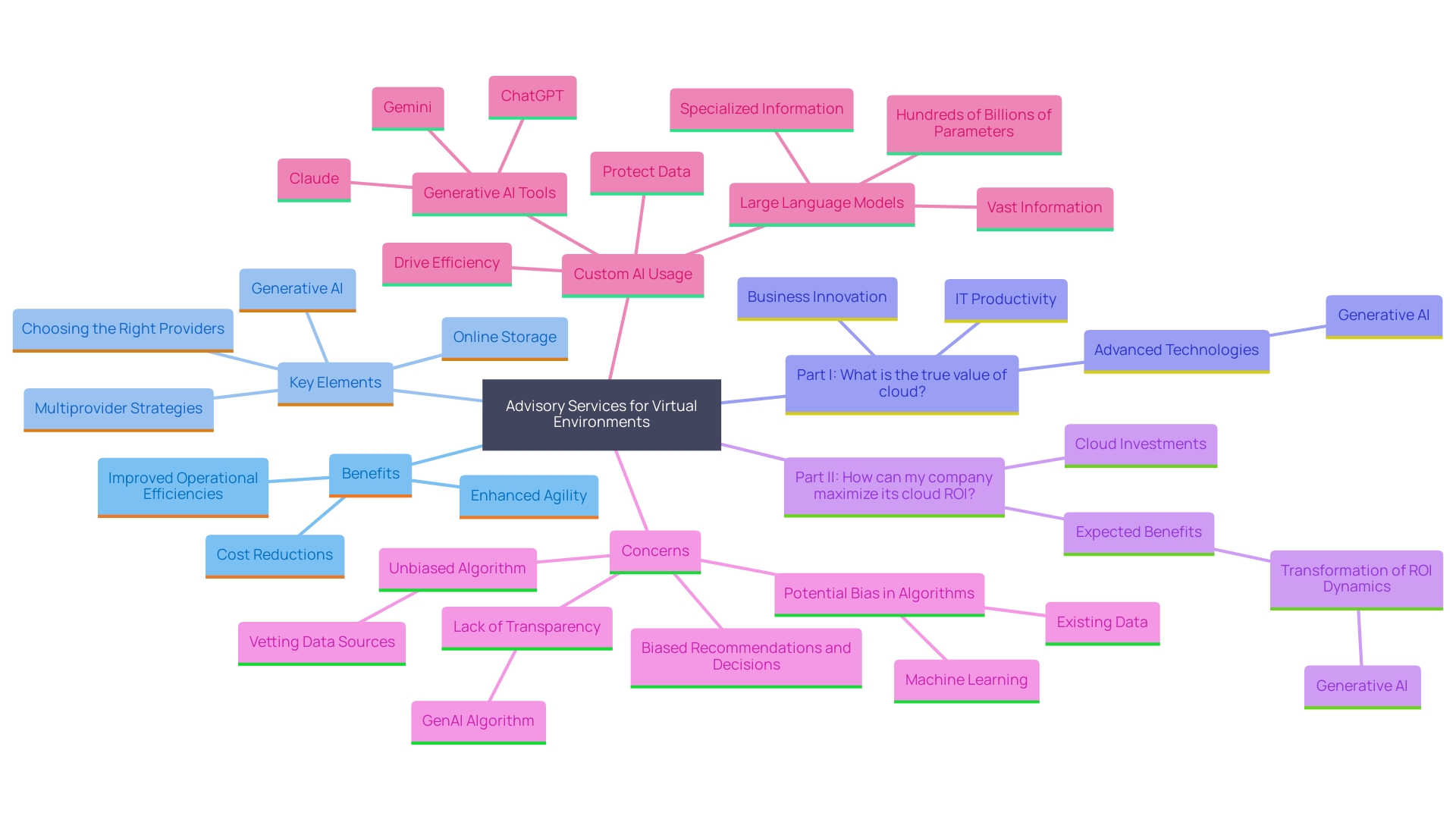
Key Components of Effective Cloud Advisory Services
A comprehensive advisory service for virtual infrastructure involves several critical components: an exhaustive assessment of the current IT framework, a strategic roadmap for adoption, well-defined risk management strategies, and continuous monitoring and optimization.
The initial evaluation should employ advanced tools such as scripts, questionnaires, and diagnostic utilities to analyze performance, safety, and compliance aspects. This foundational step is crucial for identifying security vulnerabilities and ensuring application compatibility, thereby facilitating a seamless transition to the cloud.
Once the assessment is complete, the creation of a tailored roadmap becomes essential. 'This roadmap should outline the steps for migration, including residency protocols, minimization, and storage limitations, ensuring compliance with regulations such as GDPR.'.
Risk management strategies should then be devised to mitigate potential threats and enhance data protection. 'Ongoing observation and enhancement are equally crucial to uphold a safe and effective online environment after migration.'. By leveraging these core components, businesses can achieve not only a successful migration but also sustained infrastructure protection and operational efficiency.
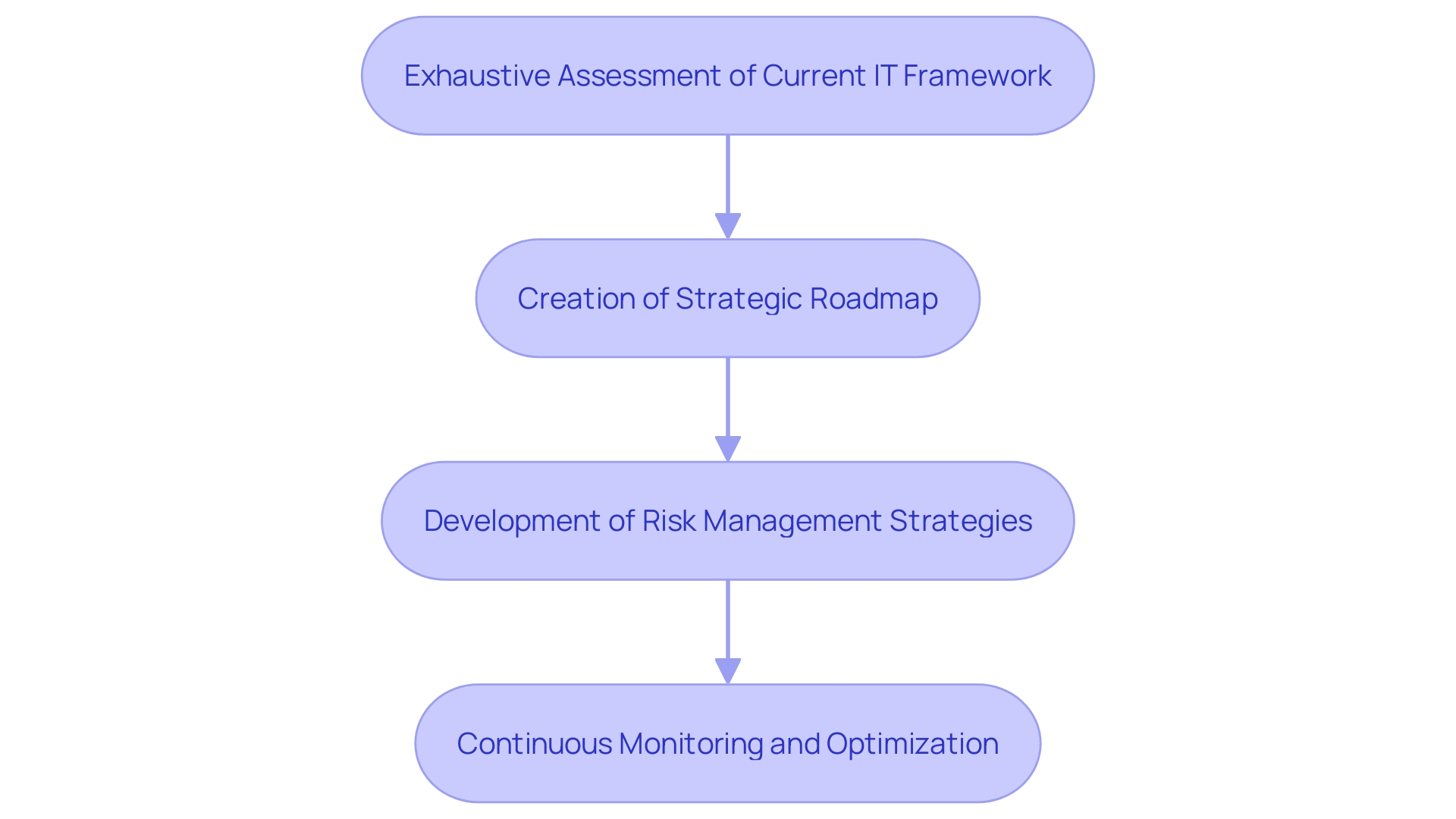
Ensuring Security and Compliance in Cloud Infrastructure
Guaranteeing safety and compliance in cloud environments is essential for any organization. 'Adopting a layered protection strategy is vital, including identity and access management (IAM), data encryption, and regular evaluations of safety measures.'. This approach aids in reducing risks and safeguarding sensitive information. Based on a 2024 survey of 927 cybersecurity experts, 78% of organizations are implementing hybrid and multi-cloud strategies, making strong protective measures even more essential.
Following industry standards, such as the Common Criteria for Information Technology Security Evaluation (CC), guarantees that products are assessed by authorized laboratories to ascertain the fulfillment of specific protection properties. These certifications, acknowledged worldwide, play an essential role in maintaining high protection standards.
Furthermore, adopting a 'Secure by Design' approach highlights the importance of incorporating protection into design and development processes from the outset. 'This proactive strategy balances agility and cost optimization with safety objectives, significantly reducing the impact of vulnerabilities.'.
As Corey Quinn highlighted in a recent interview, the connection between protection and expenses in the digital environment is intertwined; efficient construction can lower costs and keep harmful individuals at a distance. Keeping track of expenditures can also assist in recognizing unauthorized resource usage, providing an additional level of protection.
In summary, a thorough protection strategy that includes IAM, data encryption, regular evaluations, and adherence to industry standards, along with a Secure by Design mindset, is crucial for safeguarding online environments and maintaining customer trust.
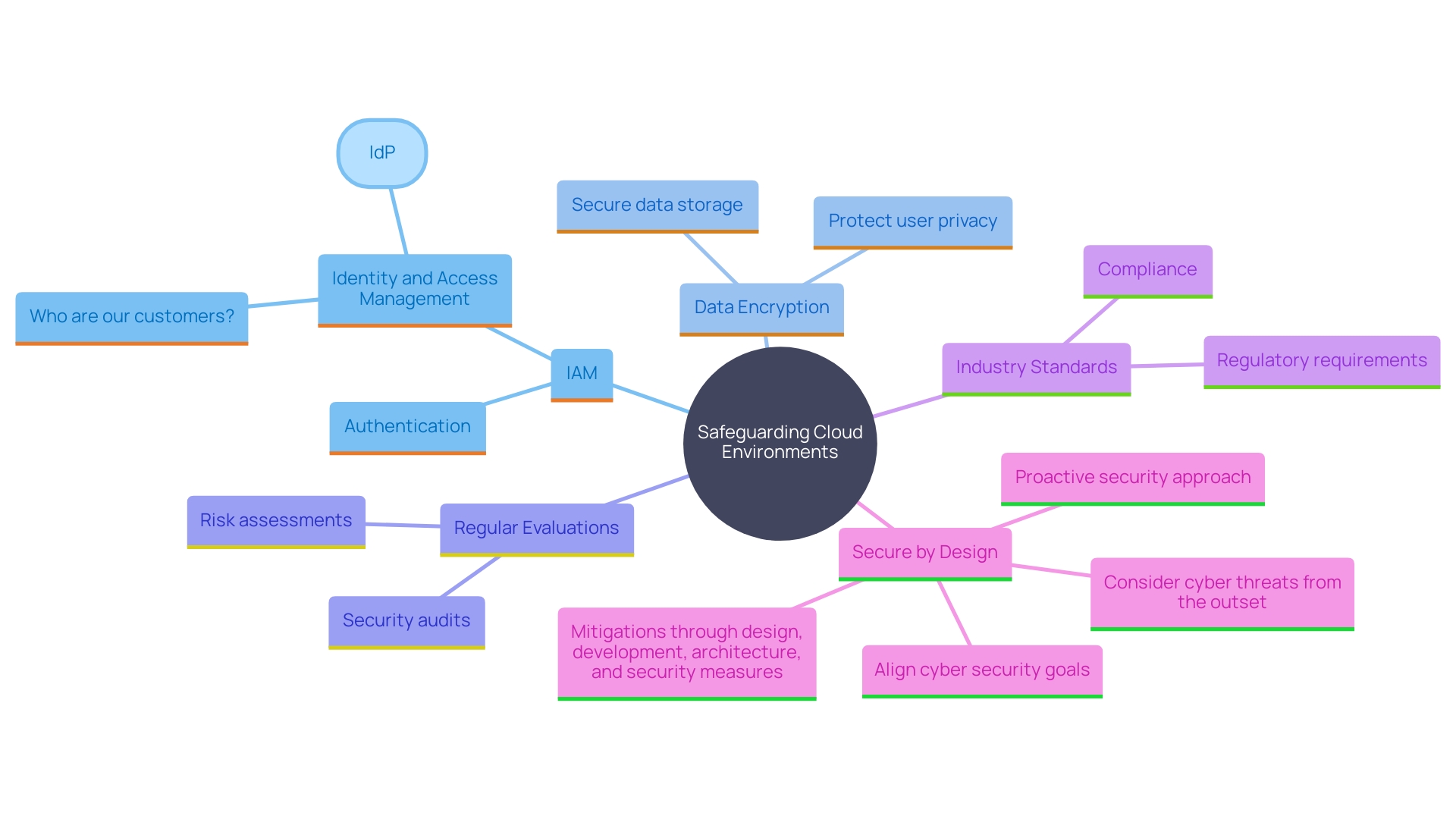
Selecting the Right Cloud Service Provider
Selecting an appropriate cloud service provider (CSP) is pivotal for any organization's success. Organizations must meticulously evaluate potential providers based on their security frameworks, compliance certifications, service level agreements (SLAs), and support infrastructure. Chess.com, for instance, has thrived by adopting a multi-cloud strategy, leveraging robust platforms to support its vast user base of over 150 million. As James Kelty, Head of Infrastructure at Chess.com, highlights, their mission to nurture the game of chess on a global scale is reflected in their seamless integration of public cloud and on-premises solutions.
The GDPR mandates stringent protocols for information protection, including information residency, information minimization, and storage limitation. Organizations must ensure that CSPs adhere to these regulations to protect personal information within the EEA. Comprehending the shared protective responsibilities is essential; for instance, Infrastructure as a Service (IaaS) providers must ensure the safety of physical and network aspects, operating systems, and data centers.
In 2024, the changing requirements of start-ups and ISVs highlight the significance of choosing CSPs with a demonstrated history, strong protective measures, and varied service options. As per a recent report, overseeing expenditure in virtual environments has continued to be a major challenge over the last two years, with businesses increasingly embracing multi-platform strategies to optimize costs and improve protection. As Corey Quinn points out, efficient management of online resources not only reduces costs but also fortifies security, highlighting the intertwined nature of these elements.
To ensure a smooth transition to cloud-managed services, organizations should first assess their IT infrastructure and goals, then research and compare providers to find the best fit. Providers like RackConnect Global, which streamlines infrastructure overflow needs, demonstrate the importance of choosing a CSP that aligns with an organization's specific requirements and long-term objectives.
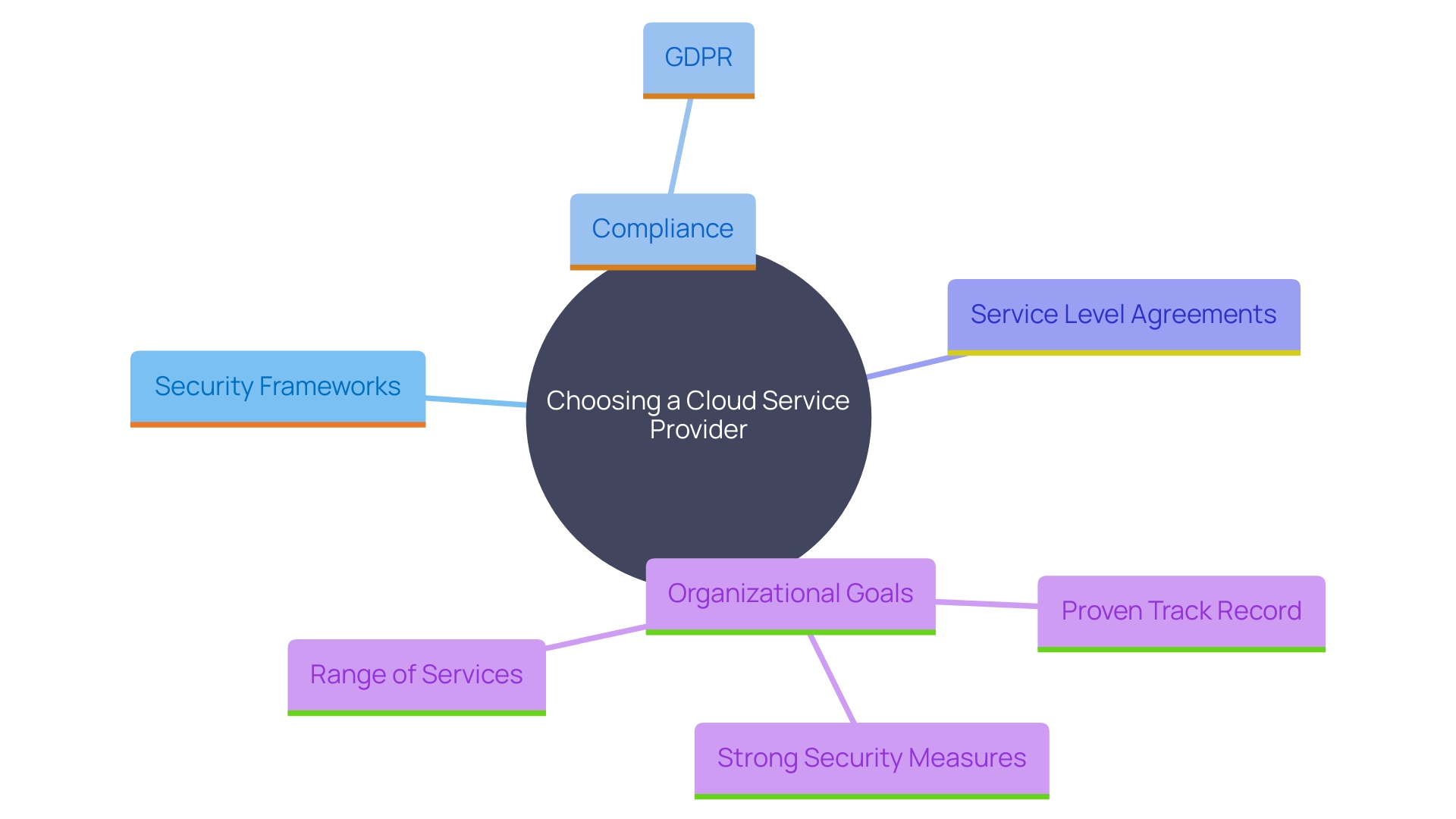
Implementing Best Practices for Cloud Adoption
To ensure a successful adoption of online services, a strategic and multifaceted approach is essential. First, creating a thorough migration plan for the online infrastructure is essential. This involves creating a detailed blueprint for transitioning infrastructure, data, and applications to cloud-based platforms. The advantages of moving to online services include lower IT expenses, increased business flexibility, better security, and access to advanced technologies.
A crucial step in this process is fostering a culture of digital literacy among employees. 'This can be accomplished through interactive workshops created to challenge and broaden stakeholders' understanding and expectations regarding the technology.'. These sessions should result in actionable plans that facilitate the transition.
Utilizing automation tools for deployment and management is another best practice. Automation not only streamlines processes but also blends seamlessly with manual interventions to prioritize applications based on business needs, as demonstrated by Lincoln Financial's dynamic approach.
Creating a governance framework is essential to guarantee the effective and efficient use of online resources. This includes establishing guidelines and protocols that direct the administration and protection of digital assets. 'Collaboration with multiple providers and partners, as seen in Lincoln Financial's multipartner approach, also plays a significant role in addressing security nuances and meeting current standards.'.
By concentrating on these strategic components, organizations can maneuver through the intricacies of digital migration and attain a more contemporary and adaptable environment.
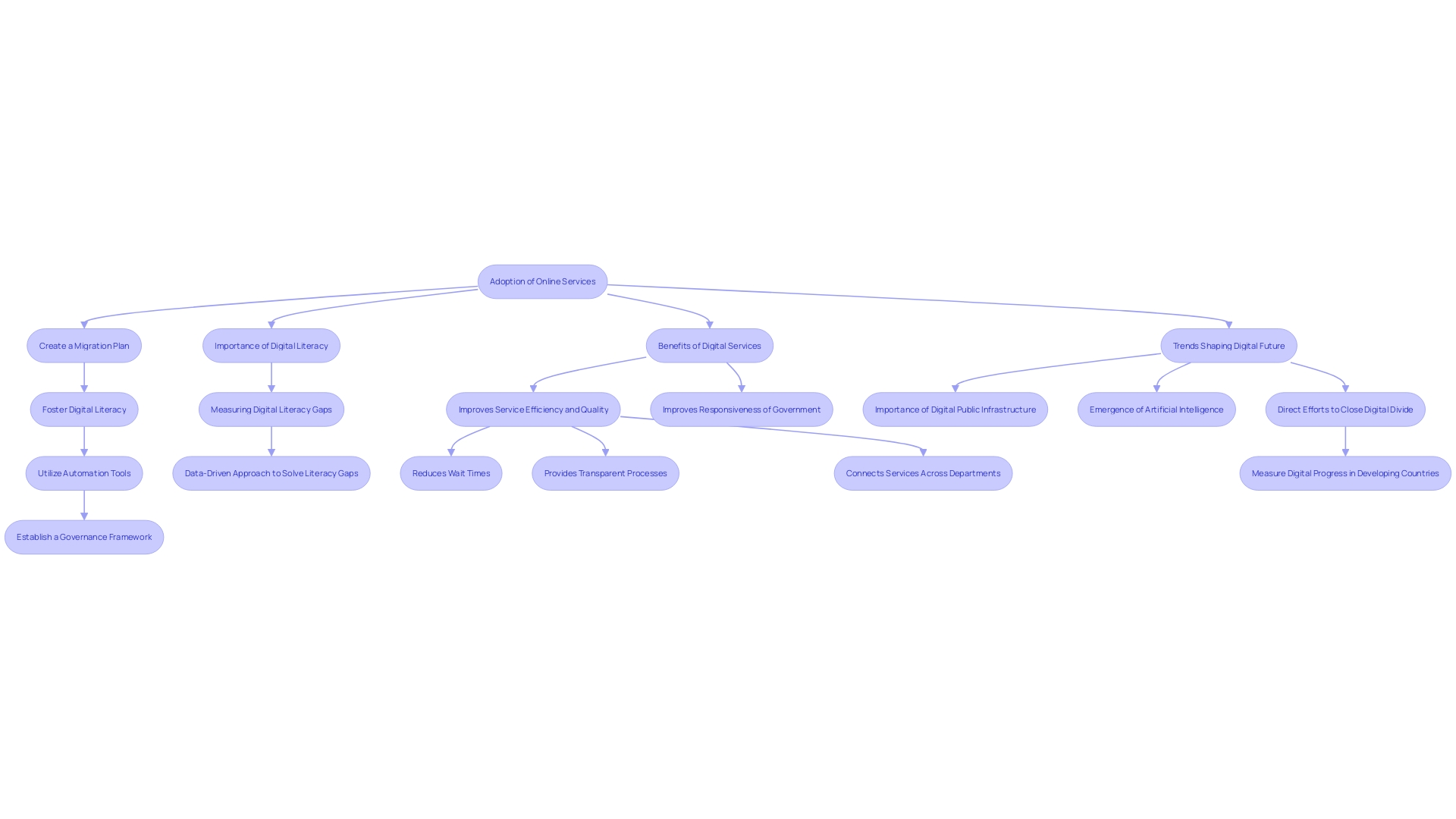
Maximizing ROI with Cloud Advisory Services
To enhance return on investment (ROI) from advisory services, organizations must embrace an approach centered on ongoing enhancement and creativity. This involves regular reviews of performance metrics to ensure efficient resource utilization and cost management. Additionally, keeping abreast of emerging technologies such as generative AI can significantly enhance business operations and drive transformative value.
A comprehensive approach to digital strategy should include balancing investments against expected benefits, enabling organizations to prioritize their migration journeys effectively. This includes optimizing data management practices, such as data compression and cold storage, to reduce costs associated with storing and transferring large volumes of data.
By maintaining a proactive stance, businesses can avoid redundancy and capitalize on the latest, more cost-effective alternatives available in the market. This strategic alignment ensures that digital initiatives are not siloed but rather integrated with an overarching vision that promotes coordination across business units and technology teams. With the cloud computing market projected to grow at a compound annual growth rate of over 18%, staying updated and making informed decisions is crucial for deriving maximum value from cloud investments.
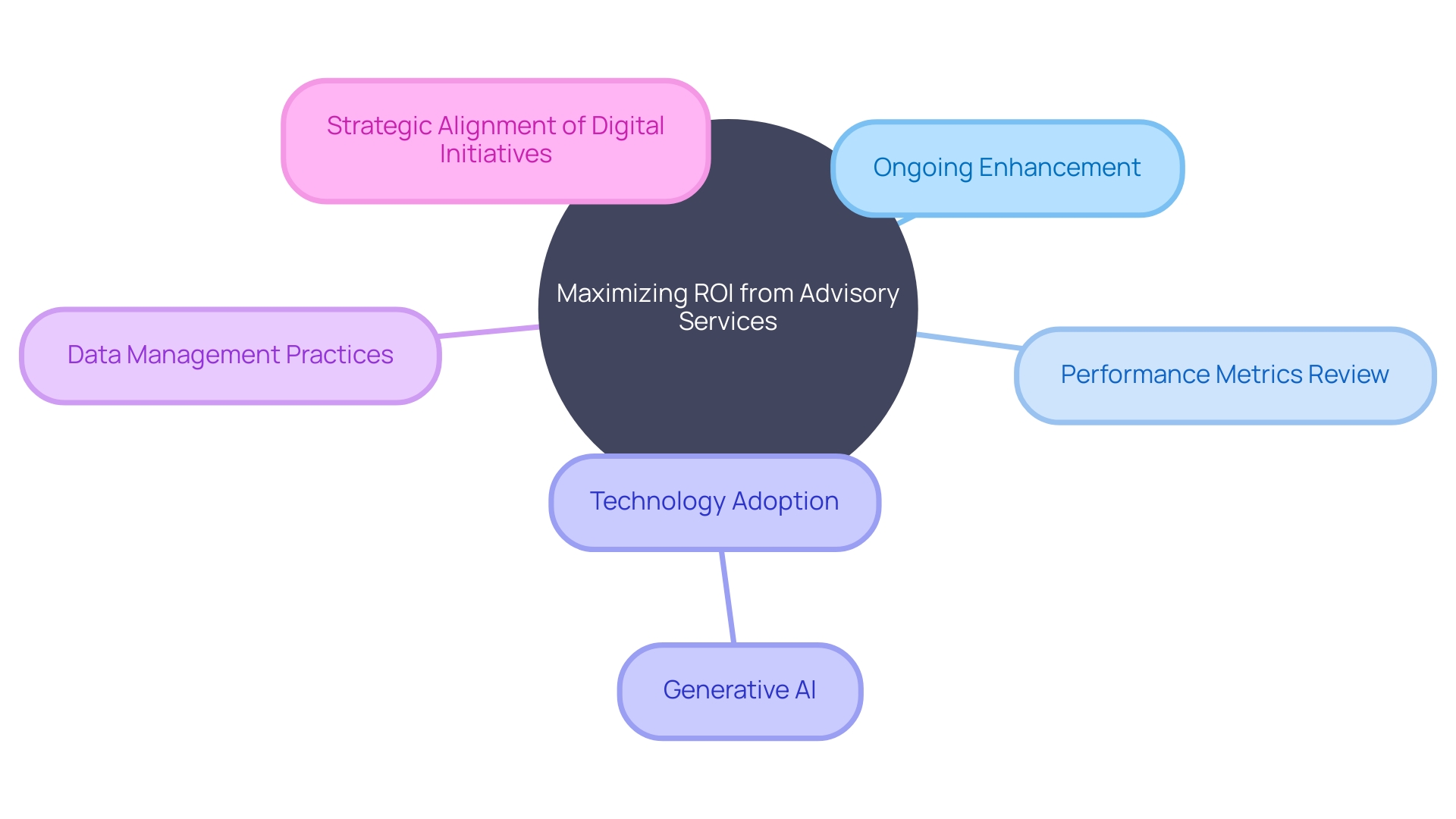
Conclusion
Cloud advisory services play a crucial role in helping organizations navigate the complexities of cloud adoption, ensuring optimized infrastructure, enhanced operational efficiencies, and fortified security. By leveraging expert insights and strategic planning, businesses can align their cloud strategies with overall objectives, resulting in significant cost savings and improved agility. The success stories of organizations like Lincoln Financial and Chess.com underscore the importance of choosing the right cloud service provider, implementing robust security measures, and fostering a culture of cloud literacy among employees.
Key components of effective cloud advisory services include thorough assessments of existing IT infrastructures, the development of tailored migration roadmaps, and ongoing monitoring to ensure compliance and security. A layered security approach, adherence to industry standards, and a proactive mindset are critical in maintaining a secure cloud environment. Furthermore, selecting a cloud service provider with a proven track record and comprehensive service offerings is essential for achieving organizational goals.
To maximize return on investment, organizations must embrace continuous improvement and innovation within their cloud strategies. This involves regular performance reviews, optimizing data management practices, and integrating cloud initiatives with broader business objectives. As the cloud computing market continues to expand, staying informed and making strategic decisions will be vital for organizations seeking to harness the full potential of cloud advisory services.
By doing so, businesses can drive sustained growth and maintain a competitive edge in an ever-evolving digital landscape.




